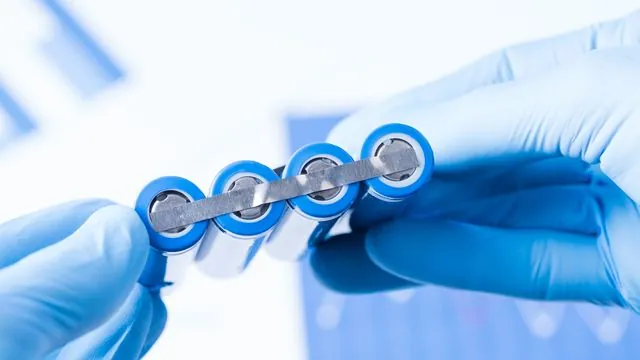
Revolutionary Addition of Catalyst Sets New Standard for Lithium-Air Battery Longevity and Efficiency
2025-01-28
Author: Nur
Introduction
Lithium-air batteries (Li-O2) could revolutionize the energy storage landscape by offering the potential to store significantly more energy compared to traditional lithium-ion batteries without increasing weight. However, their theoretical advantages have yet to be realized in practical applications, primarily due to a short lifespan and insufficient performance. A remarkable breakthrough from a team of Chinese researchers has introduced a soluble catalyst into the electrolyte, significantly enhancing the battery's efficiency and longevity.
Operation of Lithium-Air Batteries
Unlike lithium-ion batteries, which rely on lithium ions being shuttled between electrodes, lithium-air batteries utilize a metallic lithium anode. During discharge, lithium ions dissolve and migrate to a porous cathode where they react with oxygen to form lithium peroxide (Li2O2). Upon recharging, the lithium ions are reduced back to metallic form, and oxygen is released. This elegant process, however, is hindered by complications like overpotential, which slows down electrochemical reactions and leads to the rapid deterioration of battery performance.
Research Breakthrough
The new research, spearheaded by Zhong-Shuai Wu from the Dalian Institute of Chemical Physics, along with Xiangkun Ma from Dalian Maritime University, marks a pivotal moment in battery technology. The team has successfully incorporated a catalyst known as 1,3-dimethylimidazolium iodide (DMII) into the electrolyte. This innovative compound acts as a redox mediator, expediting charge transport while simultaneously preventing the passivation of electrodes—the phenomenon that effectively seals off the active materials from interacting with the electrolyte due to unwanted byproducts.
Enhancements from the Catalyst
The iodide ions in DMII engage in a rapid reversible reaction that transfers electrons to and from oxygen, significantly enhancing the discharge efficiency. The DMI+ ions in the solution create a robust interface film on the battery's anode, isolating it from the electrolyte and minimizing detrimental reactions. This advancement not only stabilizes the anode but also contributes to dramatically increased battery lifespan.
Performance Testing
In rigorous testing, the electrochemical cells operated with an impressive overpotential of only 0.52 V and demonstrated remarkable cycle stability over 960 hours. The formation and decomposition of lithium peroxide, which is central to battery function, exhibited high reversibility without inciting side reactions—a significant hurdle that previous lithium-air battery designs failed to overcome.
Conclusion and Future Outlook
The findings of this research herald an exciting era of possibility for lithium-air batteries, which could eventually pave the way for energy storage solutions that support everything from electric vehicles to grid storage. As battery technology continues to evolve, this breakthrough suggests that the dream of high-capacity energy storage could soon become a practical reality.
Follow-Up
Stay tuned as we follow further advancements in this field and their implications for the future of energy storage!





 Brasil (PT)
Brasil (PT)
 Canada (EN)
Canada (EN)
 Chile (ES)
Chile (ES)
 Česko (CS)
Česko (CS)
 대한민국 (KO)
대한민국 (KO)
 España (ES)
España (ES)
 France (FR)
France (FR)
 Hong Kong (EN)
Hong Kong (EN)
 Italia (IT)
Italia (IT)
 日本 (JA)
日本 (JA)
 Magyarország (HU)
Magyarország (HU)
 Norge (NO)
Norge (NO)
 Polska (PL)
Polska (PL)
 Schweiz (DE)
Schweiz (DE)
 Singapore (EN)
Singapore (EN)
 Sverige (SV)
Sverige (SV)
 Suomi (FI)
Suomi (FI)
 Türkiye (TR)
Türkiye (TR)